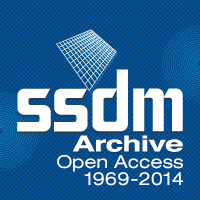Awards
There are three categories of awards for authors who presented papers at the SSDM:
the SSDM Award, the SSDM Paper Award, and the SSDM Young Researcher Award.
SSDM Award
The SSDM Award will be will be awarded to researchers who contributed an outstanding paper at past SSDM. The Award Committee selects this award.
Tohoku University
In this work, a hierarchical neural network was constructed as a real circuit on a Si LSI with “neuron MOS” devices in which multiple input gates were capacitively coupled to a floating gate and the on-line learning was demonstrated. The 1990s, when this paper was published, was the time of the second boom of artificial intelligence (AI), and research focused on hardware for realizing AI became active. For example, to realize a neural network with a brainlike structure, various methods using nonvolatile memory and logic devices were proposed and studied. In conventional analog circuits, to realize the product-sum operation, which is frequently used in the calculation of a neural network, it is necessary to express a signal at the current level and realize the calculation by current addition or signal addition at the charge level. However, with these conventional methods, there are problems such as large areas of circuits, high power consumption, and increase in delay time, which have restricted the development of neural networks with large-scale integration.
In the paper, the authors showed that the use of "neuron-MOS", which has high compatibility with digital circuits, enabled the product-sum operation with voltage linear adder circuits, and demonstrated on-line learning with the hierarchical neural network for the first time.
Currently, the usefulness of AI is recognized, and the method of realizing AI hardware is drawing attention for the objective of further development of applications. Since this work is a pioneering research in this field and has had a great impact on academic and industrial communities, we present this SSDM Award here and honor its achievements.
-
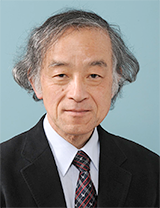
Tadashi Shibata
The Japan Society of Applied PhysicsTadashi Shibata was born in Japan in 1948, and received the B.S degree in electrical engineering and the MS degrees in material science both from Osaka University, and the Ph.D. degree from The University of Tokyo, in 1971, 1973 and 1984, respectively.
From 1974 to 1986, he was with Toshiba Corporation, where he worked as a VLSI process and device engineer. During the period of 1978 to 1980, he was a Visiting Research Associate at Stanford University, where he studied the laser beam processing of silicide, polysilicon, and superconducting materials. From 1986 to 1997, he was Associate Professor at Tohoku University, where he worked on ultra-clean technology and low-temperature processing. Since the invention of a new functional device called Neuron MOS Transistor (nMOS) in 1989, his research interest shifted from devices and materials to circuits and systems. In 1997, he became Professor at The University of Tokyo and did research on building human-like intelligent systems on VLSI chips. He explored biologically-inspired as well as psychologically-inspired brain models for implementing brain-mimicking functions directly on silicon chips. In 2013, he retired and became Professor emeritus of The University of Tokyo. Currently he is serving as Editor-in-Chief of Applied Physics Express and Japanese Journal of Applied Physics.
Dr. Shibata is a life member of the IEEE Electron Devices Society, Circuits & Systems Society and Computer Society, and a fellow member of the Japan Society of Applied Physics. -
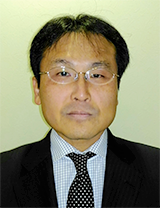
Hideo Kosaka
Sony Imaging Products & Solutions Inc.Hideo Kosaka was born in Saitama, Japan, in 1967. He received the B.S. and M.S. degrees in electronic engineering both from Tohoku University, Sendai, Japan, in 1992 and 1994, respectively.
When he was a graduate school student at Tohoku University, he studied the hardware implementation of neural networks using Neuron MOS transistors. In 1994, he joined Research Center of Sony Corporation, Atsugi, Kanagawa, Japan, where he worked on the circuit design of microprocessors. At present, he is working for Sony Imaging Products & Solutions Inc., Shinagawa, Tokyo, Japan, and being engaged in the development of Contactless IC Card Technology, FeliCa. His work includes the LSI chip design for near field communication, their module design and development, the electronic paper display system development including its specialized chip, and so forth. He is currently working on the development of IC card for Transit Ticket and e-Money. -
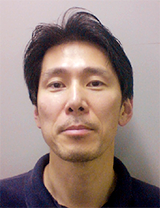
Hiroshi Ishii
NXP SemiconductorsHiroshi Ishii was born in Tokyo, Japan, in 1965. He received the B.S. and M.S. degrees in polymer chemistry both from Kyoto University, Kyoto, Japan, in 1989 and 1991, respectively.
He studied the hardware implementation of neural networks using Neuron MOS transistors at Tohoku University as a visiting researcher from Motorola Inc.. In 1993, he joined Tohoku Semiconductor Co., Sendai, Japan, where he worked on the process development for various devices, DRAM, MCU, MEMS and so on. At present, he is working for NXP semiconductors, Texas, USA as a MEMS device engineer for accelerometers. -
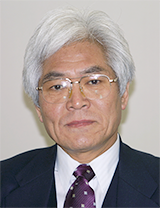
Tadahiro Ohmi
Tohoku UniversityTadahiro Ohmi was born in Tokyo, Japan, in 1939. He received the B.S., M.S., and Ph.D. degrees in electrical engineering from the Tokyo Institute of Technology, Tokyo, in 1961, 1963, and 1966, respectively.
He was a Research Associate with the Department of Electronics, Tokyo Institute of Technology. In 1972, he moved to the Research Institute of Electrical Communication, Tohoku University, Sendai, Japan, as a Research Associate, where he became an Associate Professor in 1976. He was a Full Professor with the Department of Electronics, Faculty of Engineering, in 1985, and with the New Industry Creation Hatchery Center, Tohoku University, in 1998. In 2002, he was titled Professor Emeritus by Tohoku University. He has published 1635 original papers and holds 1795 patent applications. He engaged in research on high-performance semiconductor devices and advanced semiconductor process technologies, such as ultraclean technology.
Dr. Ohmi was the recipient the Medal with Purple Ribbon from the Government of Japan and the Best Collaboration Award (the Prime Minister's Award) in 2003.
To our regret, Dr. Ohmi passed away at 77 years old in 2016.
SSDM Paper Award
SSDM Paper Award2018 will be awarded to the best paper presented at SSDM2017.
1.Univ. of Tokyo (Japan), 2.Toshiba Corp. (Japan)
SSDM Young Researcher Award
SSDM Young Researcher Award 2018 will be awarded to outstanding papers authored by young researchers and presented at SSDM2017.
1.Univ. of Tokyo (Japan)
1.National Tsing Hua Univ., Hsinchu (Taiwan), 2.Taiwan Semiconductor Manufacturing Company (Taiwan)
T. Tanaka1
1.Tohoku Univ. (Japan)
T. Moriyama1, K. -J. Lee2, K. -J. Kim1,4, T. Ono1,5
1.Kyoto Univ. (Japan), 2.Korea Univ. (Korea), 3.Univ. of Tokyo (Japan), 4.KAIST (Korea), 5.Osaka Univ. (Japan)
K. Inoue1, K. Maehashi1,3, K. Matsumoto1
1.Osaka Univ. (Japan), 2.Mitsubishi Electric Corp. (Japan), 3.Tokyo Univ. of Agri. & Tech. (Japan)
Call for 2018 SSDM Award Nomination
The SSDM Award was established to recognize outstanding contributions to academic or industrial development in the field of solid state devices and materials.
Papers to be nominated for the 2018 SSDM Award should be among those that have been presented between the 1st SSD conference in 1969 and the 44th SSDM conference in 2012.
The SSDM Award will ultimately be decided by the SSDM Organizing Committee after a recommendation is made by the SSDM Award Nomination Committee.
The recommendation will be in accordance with the following two criteria.
-
1) Originality
The award-winning selection must be original, and must have had significant theoretical or practical impact in the field of solid state devices and materials. -
2) Contribution
The author(s) of the award-winning selection must have played or be playing a pioneering or leading role, with globally outstanding contributions in the technological field.
Candidate and Nominator Eligibility
-
- Candidates Eligible for the Award
All authors who presented papers between the 1st SSD conference in 1969 and the 44th SSDM conference in 2012, excluding papers written by this year’s Organizing Committee Chair and Award Nomination Committee Chair. -
- Persons Eligible for Nominating Candidates
Anyone, excluding this year’s members of the SSDM Award Nomination Committee.Notice: Self-nominations are permitted. In the case of self-nomination, at least one endorsement letter (any form is acceptable) from persons other than the authors of the paper must be submitted along with the Nomination Form.
Submission Process for SSDM Award Nominations
The following is the process for submitting nominations.
- - Before deciding on a candidate for the award, confirm the eligibility of nominators and candidates once again.
- - Download the Nomination Form.
SSDM Award Nomination Form (MS-Word) - - Fill out the Nomination Form and send it to the SSDM Secretariat by the nomination deadline.
The deadline for nomination is now extended till May 7, 2018. CLOSED
If you have any questions, please ask the secretariat by e-mail.
Sumitomo-Shoji Kanda-Izumi-cho Bldg., 13F
1-13 Kanda-Izumi-cho, Chiyoda-ku, Tokyo 101-0024


